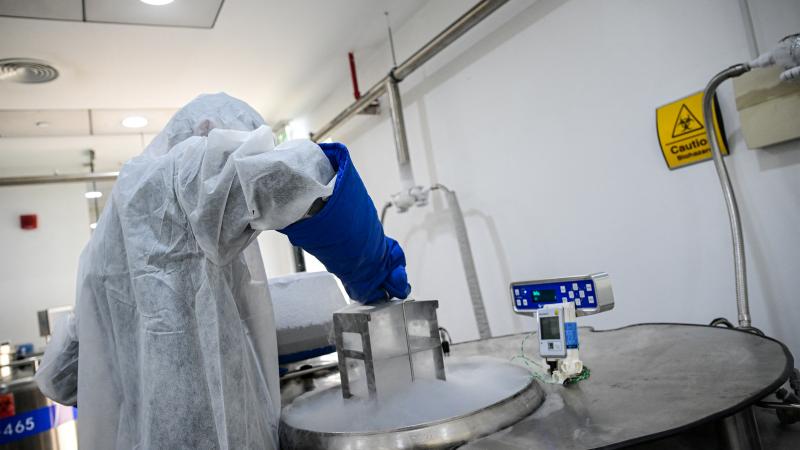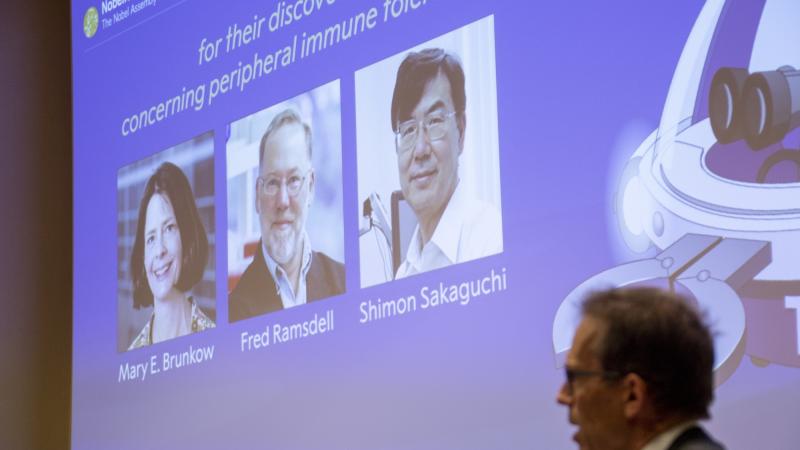NASA chief: Space abounds in security threats, technological promise
In a wide-ranging interview on "Just the News AM," NASA Administrator Jim Bridenstine touted his agency's innovations in 3D-organ printing, immunization, and fiber optics made possible through microgravity in space.
NASA Administrator Jim Bridenstine on Thursday applauded the United States' recent ending of nine years of reliance on Russia to transport American astronauts to the International Space Station, while also warning of the growing threat of Chinese and Russian anti-satellite technologies.
In a wide-ranging interview on "Just the News AM," Bridenstine touted his agency's innovations in 3D-organ printing, immunization, and fiber optics made possible through the microgravity found in space.
"All of our power grid is dependent on a timing signal from GPS," Bridenstine said. "We are dependent on space in a way that the enemies of the United States know is an existential threat to our existence. That's why they're advancing these capabilities. That's why President Trump has created the Space Force to make sure no matter how much they invest and no matter what they build in space they will not get a competitive advantage over the United States of America."
Bridenstine, a former Oklahoma congressman, noted that in 2011 American space shuttles were retired without replacements, leaving a nine-year-gap during which the United States lacked any human launch capability. During the Obama administration, a replacement program called Constellation, a moon program, got cancelled as well.
"There were thousands and thousands of jobs that were let go in Florida at the Space Coast," he said. "It was just a lack of vision or lack of interest from the previous administration. I can't tell you why they made those decisions, but certainly they did."
The successful May launch of NASA astronauts to the International Space Station on a commercial American rocket from Cape Canaveral, Fla. marked two new milestones in the Trump administration's ambitious space efforts: the first time since 2011 NASA has sent astronauts to space from U.S. soil and the first crewed flight ever by a private company.
"When we think about the threats that are proliferating," said Bridenstine, turning to space as a military domain, "anti-satellite missiles are being launched by some of our competitors in the world — China and Russia specifically: co-orbital, anti-satellite capability, jamming, spoofing, packing, dazzling. They are working every day to make sure that they can destroy space because they know how dependent we are on it as a nation."
President Trump championed a new branch of the military, the Space Force (totally separate from NASA and under U.S. Air Force authority) aimed at solidifying America's advantage in space, revived the National Space Council, and prioritized the planning of the first manned mission to Mars.
"We will protect, and we will defend," Bridenstine said of America's broader strategic approach. "Now that is not what NASA's mission is. Our mission is exploration, discovery, and, in fact, diplomacy. We actually have the ability to partner with nations all over the world that are competitors of ours, because we are not a national security or defense agency. But I will tell you we benefit from a secure space environment. And I am glad, in fact, when I was in the House of Representatives I was very supportive of creating a Space Force even back then, and President Trump made it happen."
Bridenstine noted the ubiquity of NASA-inspired technology used by Americans in everything from satellites and cell phones to services like Skype that allow for global communications —technologies first harnessed through space exploration that were licensed to private companies like Nokia.
"So this is technology that is born of NASA, but think about how we're communicating right now," Bridenstine said, referring to his Just the News interview occurring live via Skype and distributed through various satellite and streaming networks. "A lot of people are watching this on the internet. Internet broadband from space connects people in rural areas of the country. I come from Oklahoma, a lot of rural Oklahoma would not have the internet, if it weren't for internet broadband from space. But we also think about things like DirecTV and Dish Network, we think about XM Radio. These are all communication capabilities, all from this little agency called NASA that has less than half of 1% of the federal budget."
Bridenstine noted the future promise of burgeoning technologies on the International Space Station, which has the capability to print human organs in 3D using the microgravity of space.
"We can take your own skin cells, and then use that to create your own tissue on the International Space Station," Bridenstine explained. "If you do that in the gravity well of Earth, the tissue just goes flat. But if you do it in microgravity of space, all of a sudden you can grow tissue in three dimensions. So we're going to print human organs. We're creating artificial retinas for human eyeballs so that people who have macular degeneration don't have to lose their eyesight."
Bridenstine said space-based technology also allows innovations in compounding pharmaceuticals to fight diseases like pneumonia in ways that cannot be done in the gravity well of Earth.
"That's resulting in therapeutics, we're creating immunization, and advancing innovation for things like salmonella, which, in other countries salmonella is the third leading cause of death for infants, so it makes a huge impact to save lives all around the world," he said.
Bridenstine also touted the International Space Station's manufacturing of advanced materials, including pristine fiber optics "so we don't have to have repeaters every mile," he said. "That drives down the cost significantly in accordance with the business case for manufacturing in space."
We're going to have transformational impacts for life on earth."














